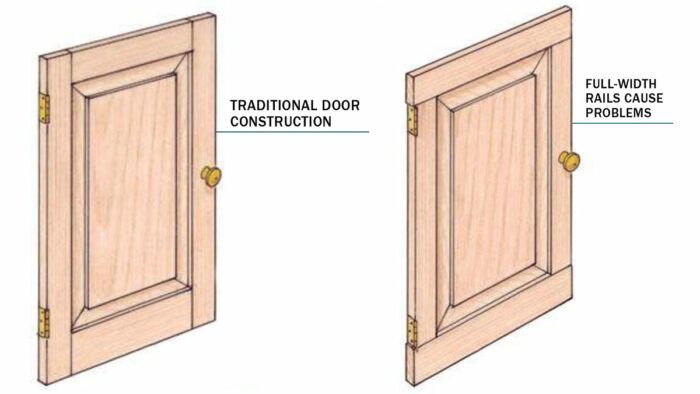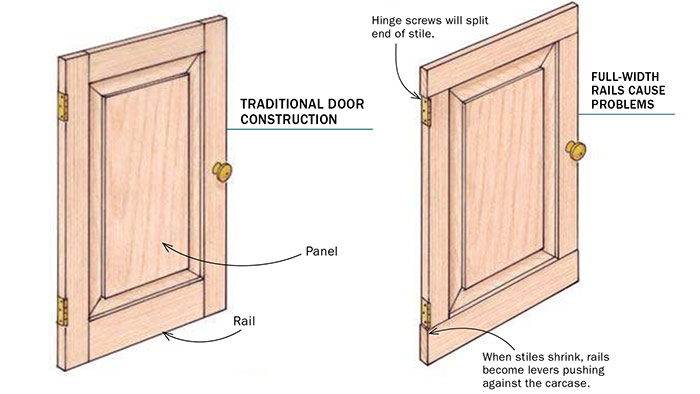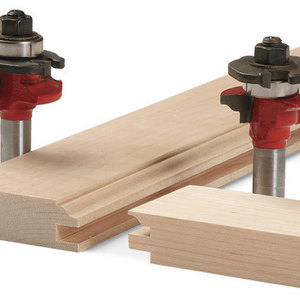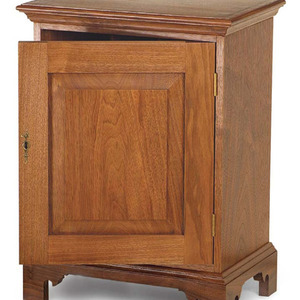
Question:
Every door I’ve seen was constructed in the same way. The stiles run through from top to bottom, and the rails are captured between them. Does this method of construction provide an advantage over a door with rails that run through from side to side with stiles captured between them? Is there a sound way to construct a door that way?
— Charlie Waeltz, Mandeville, LA
Answer:
I asked two of our contributing editors, Christian Becksvoort and Garrett Hack, this question. I learned there are several good reasons to go with tradition. First, the continuous “backbone” of the stile in traditional construction makes the door stronger.
Second, a door with rails that run through from side to side creates three problems, all of which involve end grain
Hinges are usually aligned with the rails: the top hinge with the bottom of the top rail, and the bottom hinge with the top of the bottom rail. If the rails run through and you drive a hinge screw 1⁄2 in. from the end of the stile, Becksvoort says, it will probably last “from 12 until noon, if it doesn’t crack right away.”
Also, the gap on the hinged side is predetermined and won’t change over the seasons. So any expansion and contraction will take place toward the lock stile. If the door should swell and need to be planed down, it is much easier to plane a continuous stile, as opposed to having end grain exposed at the top and bottom
Finally, if the hinge-side stile of a door with rails running through should shrink too much, the end grain of the rails will jut out and lever against the case frame when the door is opened and closed. That levering action could result in damage to the piece or the hinge
From Fine Woodworking #201, Drawing by Vince Babak
Fine Woodworking Recommended Products

Jorgensen 6 inch Bar Clamp Set, 4 Pack

Stanley Powerlock 16-ft. tape measure

Starrett 12-in. combination square
























Log in or create an account to post a comment.
Sign up Log in